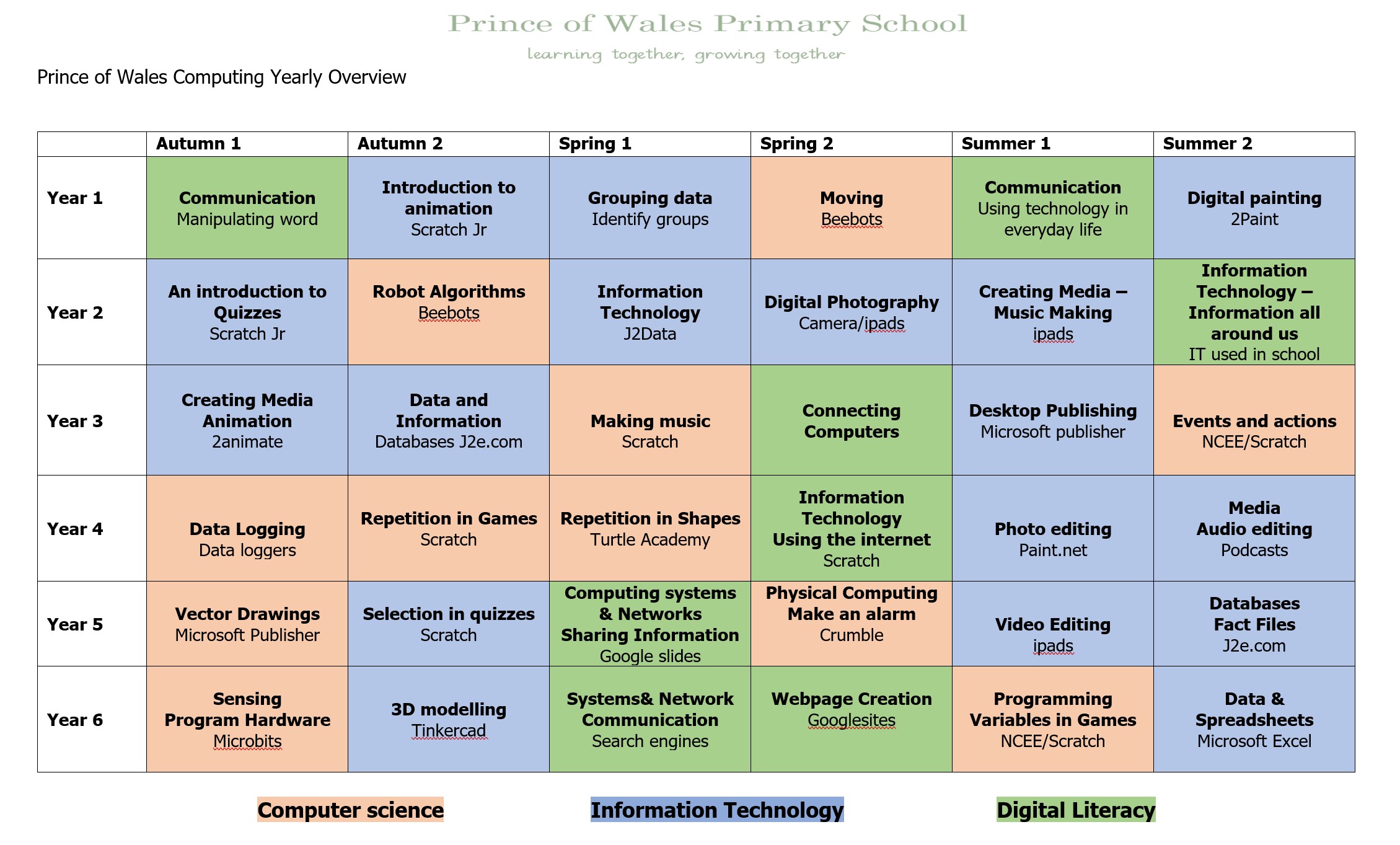Computing
Computing Aims
Technology is ever more integrated into our lives at home, at work and more widely. Therefore, at Prince of Wales, we place significant emphasis on children developing the skills they need to use technology effectively. We aim to build children’s cultural capital so that they will be equipped with the essential knowledge, behaviours and skills that they need to become educated citizens. We believe that this is a key ingredient in ensuring our pupils are successful in society, their career and the world of work.
Through our computing curriculum, we aim to ensure children:
- have an understanding of the concepts of Computer Science
- develop the ability to analyse problems in technical terms
- are able to evaluate and apply information technology
- become responsible, competent and creative digital citizens as they become increasingly confident in their computing skills
At Prince of Wales, this is embedded within a wider computing culture as all children have access to iPads and laptops within their lessons so that the computing skills they develop are applied and reinforced regularly across the curriculum.
Teaching Approaches
Our bespoke curriculum is based on the needs of our children and the resources available to them. In years 1-6, each class receives 6 units of Computing teaching per year. These lessons either make use of the computer suite; a class set of iPads or laptops depending on suitability. This is supplemented with additional computing resources such as crumble kits, data loggers or robots.
We have 4 golden threads that weave their way through our Computing curriculum and build with the progression of units:
- Computer Science
- Information Technology
- Digital Literacy
- E-safety




